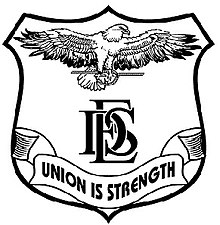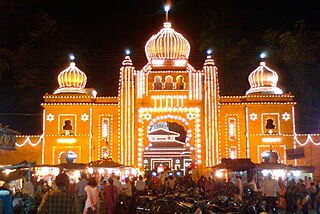
Sangli is a metropolitan town and the headquarters of Sangli District in Maharashtra, in south-western India. It has earned the nickname "Turmeric City of India" for being the hub of the Asia's largest production and trade of this spice. Sangli is situated on the banks of river Krishna and houses many sugar factories. A significant city in South-Western India, it lies 376 km from Mumbai, 230 km from Pune and 638 km from Bangalore. The city has a significant healthcare hub, including its twin City Miraj. Sangli-Miraj combined has more than 1000+ Hospitals and Clinics. Sangli is known as Turmeric city for its global turmeric trade as well grapes, raisins, jaggery and the most significant number of sugar factories in India, with district area having has more than 30 sugar factories.The Sangli region boasts the largest raisin market in Asia. Sangli-Miraj-Kupwad municipal corporation (SMKMC) along with its Urban Agglomeration consisting satellite towns of Madhavnagar & Budhgaon is 93rd biggest in India.

The Wilson College, established in 1832 in Mumbai, is one of India's oldest colleges; its foundation precedes that of the University of Mumbai,, by 25 years. Wilson College was granted autonomy by Mumbai University in November 2021. It was awarded an A rating by the National Assessment and Accreditation Council (NAAC) in 2005.
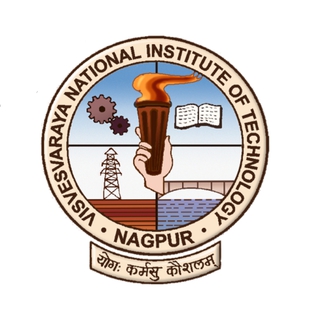
Visvesvaraya National Institute of Technology Nagpur (VNIT) formally known as Visvesvaraya Regional College of Engineering (VRCE) is a public technical university located in the city of Nagpur, Maharashtra. Established in 1960, the institute is among 31 National Institutes of Technology (NITs) in the country. In 2007, the institute was conferred with the status of Institute of National Importance by the National Institutes of Technology, Science Education and Research Act, 2007 of the Parliament of India with all other NITs.

Miranda House is a constituent college for women at the University of Delhi in India. Established in 1948, it is one of the top ranked colleges of the country and ranked number 1 for consecutively seven years.

Munsang College is an eminent EMI college situated in Kowloon City, Hong Kong founded by Mr Au Chak Mun and Dr Ts'o Seen Wan in 1926. It adopts the house system; each student is assigned to one of six houses, which are named Love, Tak, Chi, Tai, Kwan, May.

P. C. Jabin Science College is a science college in Hubballi, India run by the KLE Society, Belagavi. It is located in Vidyanagar, Hubballi, next to the KLE Technological University, Hubballi. The college is named after its principal donor Parappa Channappa Jabin of Hubballi. It is recognised under 2F and 12B of the UGC Act, June 1966. The college was reaccredited by NAAC and the UGC awarded the status of "College with Potential for excellence" in 2006. UGC has granted autonomous status to the college.

St. Edmund's College, often abbreviated as SEC, is an educational institute of the Congregation of Christian Brothers located in Shillong, Meghalaya, India. It is the oldest college in Meghalaya and second oldest in Northeast India behind Cotton College, Guwahati (1901). It was established in 1924 and celebrated its Platinum Jubilee in 1999. An alumnus of St. Edmund's College, Shillong or St. Edmund's School, Shillong is often called an Edmundian.
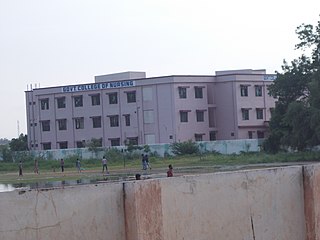
Kurnool Medical College, established in 1956, is one of the oldest medical schools in India, located in Kurnool, Andhra Pradesh.

Government College of Engineering, Karad (GCEK) is an autonomous technical institute in the Indian state of Maharashtra. It was established in 1960 and is affiliated to the Shivaji University with an autonomous status under the UGC. The autonomy was granted in 2015 by the UGC. Karad is a culturally vibrant town and is a sought after center of education in Western Maharashtra.

Ganesh Shankar Vidyarthi Memorial Medical College is a public medical college in Kanpur, Uttar Pradesh. The college is named after Ganesh Shankar Vidyarthi, a freedom fighter and journalist from Kanpur. It was founded in 1956.
Vyasanagar College, Jajpur Road, Jajpur, Odisha is the 29th Autonomous college of Odisha. The autonomous status was granted in February 2009, renewed on 2016 by University Grants Commission (UGC) of India.

MCC Higher Secondary School is located in Chetpet, Chennai, Tamil Nadu, India. It was founded in 1835 and has a long, and illustrious history, including having produced many citizens of note. It is also known for its large campus in the center of the city, with large playgrounds, verdant gardens, and various facilities.

The Deccan Education Society is an organisation that runs 43 education establishments in Maharashtra, India. Its main branch is situated in Pune.
Pune railway division is one of the eight

The Kajang High School, better known by its initials KHS in English and SMKTK in Bahasa Malaysia, is a national secondary school in Kajang, Hulu Langat District, Selangor, Malaysia. It is the oldest school in Kajang and the district of Hulu Langat when the first block was erected at Mile 14 Cheras Road, opposite Jamek Mosque of Kajang.
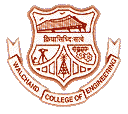
Walchand College of Engineering is a college in the city of Sangli, Maharashtra, India. The WCE campus is situated on nearly 90 acres of land in Vishrambag, roughly midway between the twin cities of Sangli and Miraj.

Maktab Rendah Sains MARA Terendak is a member school of a group of co-educational boarding schools known as MRSM or alternatively known as MARA Junior Science College or MJSC. It is in Terendak Camp, Malacca in Malaysia. The school is on a 19-acre area in Terendak Camp which is the largest military camp in Malaysia. MRSM Terendak can accommodate up to 700 students from the age of 13 to 17.

Government Medical College, Aurangabad is a medical school affiliated to the Maharashtra University of Health Sciences (MUHS), Nashik. The College is recognized by the Medical Council of India (MCI), New Delhi for medical education in India. It was founded in 1956. At present, the college accepts 200 students per year for the undergraduate course MBBS and around 127 students per year for the various postgraduate courses.

Gobardanga Hindu College, established in 1947, is a general degree college in Gobardanga, West Bengal, India. It offers undergraduate courses in arts, commerce and sciences and postgraduate courses in arts. It is currently affiliated to West Bengal State University. In 2024, it was reaccredited grade A by the National Assessment and Accreditation Council (NAAC). It is currently the only college in North 24 Parganas to receive an A grade for the third successive time

Government College of Engineering and Research, Avasari Khurd (GCOEARA) is a Maharashtra state government engineering college. It was established in 2009. The college is located about 62 km north of Pune, on Nashik-Pune National Highway (NH-60) and 70 km from the shrine Bhimashankar. The campus is spread over 50 acres with academic buildings and separate administrative and workshop buildings, a separate residential zone with quarters for faculty and staff and hostels. The college is approved by All India Council for Technical Education, New Delhi, and is affiliated to Savitribai Phule Pune University. Directorate of Technical Education, Maharashtra state, Mumbai controls the institute through its regional office at Pune.

